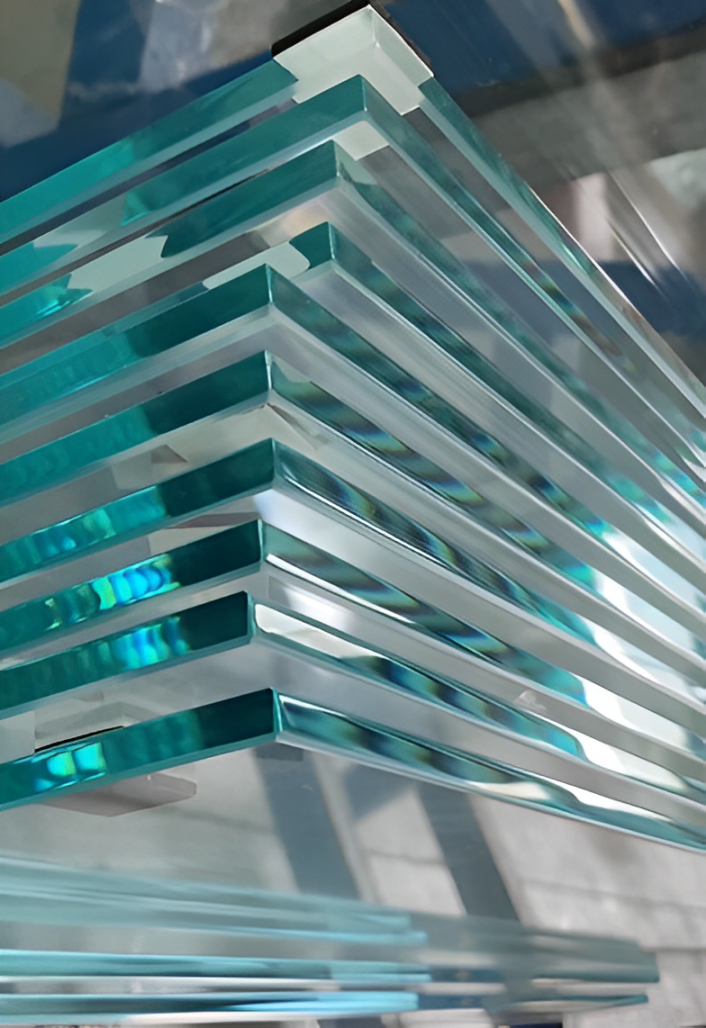"Anmol Bunglow", 1st Floor, Plot No. 2, Mangal Co. Op. HSG Soc.,
Behind Indraprasth Mangal Karyalaya,
Gangapur Road, Nashik - 422005.
Dist : Nashik, Maharashtra (India).

Laminated glass is two or more panes of glass with one or
more layers of polyvinyl butyral (PVB) or ionomers sandwiched between them
and treated. This sandwich has some unique advantages. The outer glass
surfaces are hard and transparent but are strongly bonded to a transparent
rubber like material on the inner surfaces of the sandwich. The glass
panes can be basic float glass or tempered or heat strengthened panels. If
the glass is broken, fragments remain strongly adhered to the PVB
interlayer thereby nearly eliminating the risk of injury from glass and
helping to resist further impact or weather damage as it does not
generally fall out of the fixing.
The most common use of laminated glass is for the front
windscreens of all cars. It is now finding more usage in
architectural applications because of its distinct characteristics.
Characteristics of Laminated Glass :
Safety : Laminated glass doesn’t shatter like
ordinary glass. It absorbs impact, resists penetration, and
remains intact even if broken, holding glass fragments in place and
lowering the risk of injury. Global building standards increasingly
specify stricter safety requirements, especially for overhead glazing
where any breakage could mean a major hazard from falling glass.
Security : The rise in urban crime and terrorism
also points to laminated glass as increasingly desirable as
a material of construction. Laminated glass resists intrusion because
the interlayer continues to safeguard the building even after the glass itself
is broken. Security glass cannot be cut from only one side, so ordinary
glass-cutters are useless as break-in tools.
Laminated glass tends to resist impact. In multiple
configurations, it can even resist bullets, heavy objects, or small
explosions. In most cases, it takes many blows, all in the same spot, to
penetrate the glass.
Sound Reduction : Laminated glass is an
excellent barrier to noise. The sheer damping performance of the plastic
interlayer makes laminated glass an effective sound control product. This makes
it ideal for airports, hotels, data-processing centers, recording studios,
and any building near airports, highways, or train lines.
UV Control : Ultraviolet light is the leading
cause of deterioration and fading of furnishings, pictures, and fabrics.
Laminated glass screens out 99% of the sun’s damaging rays, protecting interior
furnishing,displays or merchandise from fading effects of UV radiation.
Earthquakes & Natural Disaster Protection: Earthquakes
often produce a fallout of extremely dangerous shards of broken glass. But
laminated glass remains in the frame, maintaining a protective envelope
around the home or building to keep the weather out and deter glass shards from
flying. Similarly, the heavy winds of tornados and hurricanes easily
shatter conventional glass, causing injuries from flying fragments and
damage to interiors exposed to the devastating weather outside.
Durability: Laminated glass retains its colour
and strength for the life of the building, yet is as easily cleaned as any
conventional glass.
Fire Retardacy : While standard laminated glass
does not meet code requirements for fire-resistant glass, it will not
disintegrate readily when exposed to heat, so it confines the fire longer,
giving more time for evacuation and control of the fire. It is important
though that in case of complete glazing with laminated glass, some panels
for fire escape should be glazed with tempered glass with a prominent sign
“Break in case of fire”.